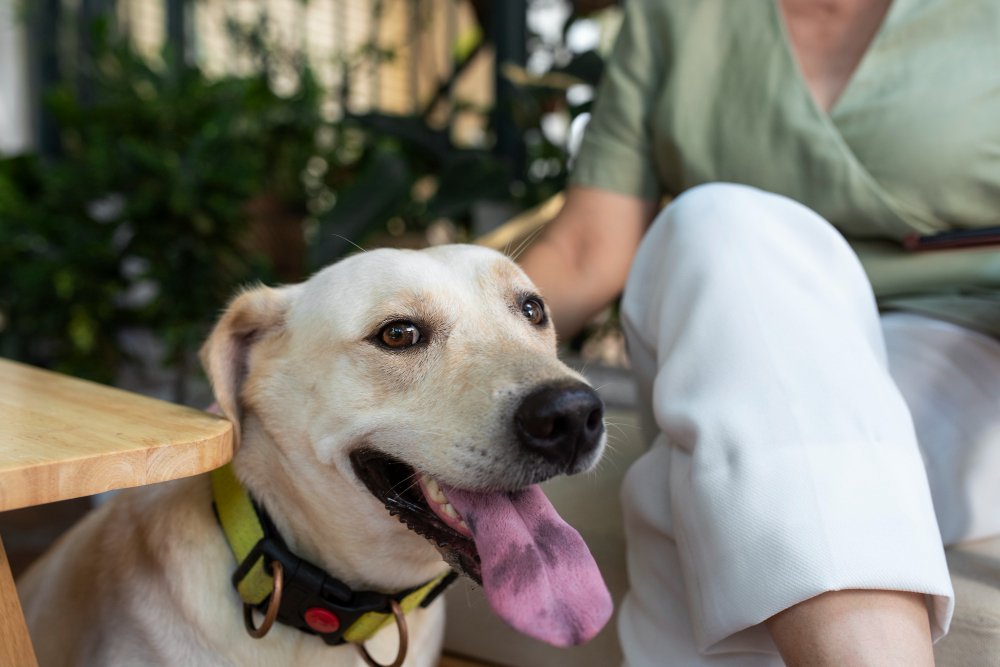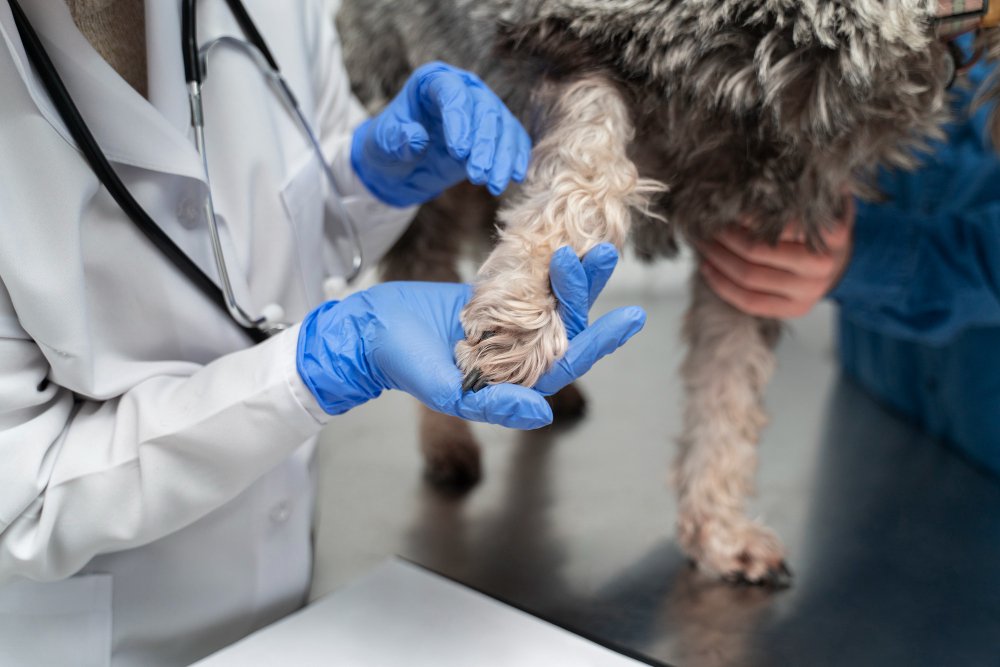Beyond Pain Pills: How Librela Is Giving Arthritic Dogs Their Lives Back
Could This Breakthrough Treatment End Your Dog's Arthritis Suffering?
Has watching your once-playful companion struggle to climb stairs or reluctantly join walks left you feeling helpless? You're not alone. Millions of dog owners witness their pets' gradual decline from osteoarthritis, wondering if anything can truly help restore their furry friend's mobility and joy.
Librela represents a genuine revolution in canine arthritis treatment that's transforming lives across America. Unlike traditional pain medications that often cause concerning side effects, this innovative monthly injection targets pain directly at its source, helping dogs rediscover movement while giving owners something precious: the return of their happy, active companion.
As the first FDA-approved monoclonal antibody treatment specifically designed for dogs with osteoarthritis, Librela works differently than anything before it. Rather than broadly affecting your dog's system like conventional medications, it precisely targets nerve growth factor (NGF)—the specific protein responsible for arthritis pain—without impacting other bodily functions.
For dogs who have been suffering despite trying multiple treatments, Librela offers new hope through its once-monthly injection schedule. This convenient administration eliminates the daily struggle of giving pills while providing consistent pain relief that lasts between veterinary visits.
The real proof of Librela's impact comes from thousands of success stories—dogs who've gone from barely moving to playfully engaging with life again. Like the Golden Retriever who went from struggling with stairs to enthusiastically playing fetch within weeks of starting treatment, these transformations aren't just about pain relief—they're about restoring the joy and connection that make our relationships with our dogs so special.
Is Librela Safe for Your Dog? What Every Pet Parent Needs to Know

When considering a new medication for your beloved companion, safety naturally becomes your top concern. Librela's safety profile has been extensively studied through clinical trials and real-world use across millions of doses, giving us substantial evidence about its risks and benefits for dogs suffering from arthritis pain.
Unlike traditional pain medications that can affect multiple organ systems, Librela's targeted approach focuses specifically on pain pathways, potentially reducing the risk of systemic side effects. This precision targeting means Librela generally avoids common concerns associated with NSAIDs, such as liver damage, kidney stress, or gastrointestinal ulceration—issues that often limit options for senior dogs who need pain relief most.
The FDA approved Librela in May 2023 after reviewing comprehensive safety data; however, ongoing monitoring continues to track its performance in broader populations. Zoetis, the manufacturer, reports that, as of early 2025, with nearly 25 million doses administered globally, no individual adverse event has occurred at a rate higher than "rare" (less than 10 occurrences per 10,000 treated animals).
Your participation in safety monitoring plays a crucial role in your dog's well-being. Being vigilant about potential reactions and maintaining open communication with your veterinarian helps ensure that you catch any concerns early. This partnership approach, involving you, your veterinarian, and ongoing research, creates a safety net that helps protect your dog while allowing them to benefit from pain relief.
For most dogs, the benefits of improved mobility and quality of life significantly outweigh potential risks. However, every dog is unique, with an individual health profile that affects how they might respond to any medication. Your veterinarian will help you weigh these factors based on your dog's specific health history, age, and concurrent conditions.
When Christine noticed her 12-year-old Bernese Mountain Dog becoming slightly lethargic after his second Librela injection, she promptly reported it to her veterinarian. Together, they decided to continue treatment but monitor closely, as the benefits of renewed mobility were significant for her aging dog. By the third dose, the lethargy had resolved completely, and her dog continued to enjoy walks and playtime that had previously been impossible due to pain, demonstrating how thoughtful monitoring and communication with your veterinarian can optimize treatment outcomes.
How Librela Transforms Daily Life for Dogs with Arthritis

Does your heart break when you watch your dog struggle to perform activities they once enjoyed with ease? Arthritis pain doesn't just limit your dog's mobility—it fundamentally changes their experience of life, often leaving them frustrated, depressed, and increasingly isolated from family interactions. Librela offers more than just pain relief; it provides the opportunity for your dog to reclaim the joy and engagement that arthritis has stolen from them.
Librela works through a revolutionary approach that directly targets nerve growth factor (NGF), the specific protein responsible for transmitting pain signals related to arthritis to your dog's brain. Unlike traditional pain medications that affect multiple bodily systems, Librela's precision targeting means:
- Focused relief exactly where needed without impacting other bodily functions
- Fewer potential drug interactions with existing medications your dog may require
- Reduced organ stress compared to NSAIDs, which can affect liver and kidney function
- Consistent comfort between doses thanks to the monthly administration schedule
The most compelling evidence of Librela's effectiveness comes from the dramatic transformations pet owners witness in their dogs' behavior. Many report their pets initiate play again, sometimes after months or years of reluctance. Daily activities, such as climbing stairs, jumping into a car, or simply getting up from a nap, happen with newfound ease, often within weeks of starting treatment.
Beyond basic mobility improvements, Librela creates profound changes in dogs' emotional well-being and quality of life:
- Renewed enthusiasm for walks, play sessions, and family activities
- Improved sleep quality as pain no longer disturbs rest
- Better appetite and digestion when pain isn't suppressing normal functions
- More social engagement with family members and other pets
- Visible signs of happiness returning, from tail wagging to playful barking
The impact of these improvements extends far beyond your dog—they transform the entire household atmosphere. When your dog suffers less, the emotional burden on you also diminishes. The guilt and helplessness many owners feel watching their beloved companion struggle often gives way to relief and joy as Librela helps restore the relationship you both cherish.
When Katherine noticed her 9-year-old Border Collie refusing morning walks and struggling to stand after resting, it was clear that arthritis had begun to limit his once-active lifestyle. After two months of Librela treatments, she tearfully described watching him spontaneously retrieve his favorite ball—something he hadn't done in over a year—and bring it to her children to initiate play. "That moment wasn't just about his pain relief," she explains. "It was about him reclaiming his identity as our family's playful, engaged companion. We didn't just get his mobility back; we got his personality back."
What Side Effects Should You Watch For? Keeping Your Dog Safe on Librela

What potential reactions might your dog experience while taking Librela, and when should you be concerned? While Librela's targeted approach generally results in fewer systemic side effects than traditional pain medications, being aware of possible reactions ensures you can respond quickly if issues arise. Most dogs tolerate Librela extremely well, but as with any medication, side effects can occur in some animals.
The most common reactions typically appear within the first 24-48 hours after injection and include:
- Injection site reactions - Temporary swelling, redness, or discomfort where the injection was administered typically resolves within a few days without intervention
- Digestive disturbances - Some dogs experience mild vomiting, diarrhea, or decreased appetite, particularly after initial doses
- Temporary lethargy - Your dog may seem unusually tired or less energetic for 1-2 days following treatment
- Slight behavior changes - Occasionally, dogs display mild anxiety or restlessness as their bodies adjust to the medication
Most of these reactions are mild and self-limiting, typically resolving within days without specific treatment. However, certain warning signs require immediate veterinary attention. Contact your veterinarian right away if you observe:
- Severe lethargy lasting more than 48 hours or preventing normal activities
- Significant changes in gait or coordination problems
- Persistent vomiting or diarrhea beyond 24 hours
- Refusal to eat for more than a day
- Unusual swelling beyond the injection site
- Signs of allergic reaction including facial swelling, hives, or difficulty breathing (extremely rare but serious)
Creating a monitoring system significantly improves your ability to detect problems early. Consider keeping a simple log during the first few treatments, documenting your dog's energy levels, appetite, bathroom habits, and mobility for three days following each injection. This record provides valuable information for your veterinarian to determine whether any reactions are concerning or simply part of the adjustment process.
The risk of side effects can be minimized through strategic planning. Schedule injections for days when you'll be home to observe your dog. Maintain consistent meal times and walking schedules to more easily identify changes in routine behaviors. Ensure your dog stays well-hydrated after treatment, as proper hydration supports kidney function and helps clear any metabolic byproducts more efficiently.
When Martin noticed his 8-year-old Boxer becoming unusually lethargic after her second Librela injection, he carefully documented her behavior, including reduced interest in evening walks and decreased appetite. Rather than panicking, he shared this detailed information with his veterinarian, who determined the reaction was mild and likely temporary. As suggested, Martin scheduled the next injection for a Friday morning so he could closely monitor his dog throughout the weekend. The mild lethargy reappeared but lasted only 24 hours, after which his dog resumed her normal routine with significantly improved mobility. By the fourth dose, the lethargy had disappeared entirely. At the same time, the benefits to his dog's arthritis continued, demonstrating how patience and careful monitoring can help navigate the adjustment period that some dogs experience when starting this beneficial therapy.
What Do Veterinarians Really Think About Librela? The Expert Perspective

When making decisions about your dog's healthcare, what could be more valuable than hearing directly from the veterinary experts who prescribe and monitor these treatments every day? Veterinarians across the country have rapidly embraced Librela as a game-changing option for managing canine arthritis, with many now considering it a first-line treatment for appropriate patients.
Veterinarians consistently highlight several compelling advantages that distinguish Librela from traditional arthritis medications:
- Targeted mechanism with fewer systemic effects - Unlike NSAIDs that work throughout the body, Librela's precise targeting of NGF means less potential impact on organs like the liver and kidneys
- Excellent option for dogs with other health conditions - Many veterinarians specifically recommend Librela for dogs with concurrent issues that make traditional medications risky
- Monthly administration improves compliance - The in-clinic injection ensures your dog receives consistent treatment without the challenges of daily medication.
- Compatibility with multimodal treatment approaches - Librela often works well in conjunction with joint supplements, physical therapy, and weight management programs.
Dr. Sarah Thompson, a veterinary pain specialist with over 15 years of experience, explains: "What makes Librela particularly exciting is its ability to help dogs who previously had limited options. For my patients with kidney disease or digestive sensitivities who couldn't tolerate traditional medications, Librela has been transformative. It's not just about managing pain—it's about opening doors for dogs who were previously out of options."
While enthusiasm for Librela runs high among veterinarians, they also emphasize important considerations every pet owner should understand before starting treatment:
- Individual response varies - While many dogs show dramatic improvement, some may experience more modest benefits
- May take multiple treatments to see full effects - Patience through the initial 2-3 monthly injections often yields the best results
- Not a replacement for comprehensive care - Weight management, appropriate exercise, and joint supplements remain important components of complete arthritis management.
- Regular monitoring remains essential - Your veterinarian will want to evaluate your dog's response and adjust the treatment plan accordingly.
Veterinarians consistently stress that Librela works best as part of a comprehensive approach to arthritis management. The most successful outcomes typically occur when Librela is combined with appropriate weight management, controlled exercise, joint supplements, and environmental modifications, such as ramps or steps, to help dogs navigate their home more comfortably.
Dr. James Richards, who specializes in geriatric pet care, shares: "What's particularly important for pet owners to understand is that Librela isn't a magic bullet—it's a powerful tool in our comprehensive approach to arthritis. The dogs who do best are those whose owners commit to the full spectrum of care: maintaining a healthy weight, providing appropriate exercise, making environmental modifications at home, and keeping up with regular veterinary assessments."
When Dr. Mark Davidson began treating his own 12-year-old Australian Shepherd with Librela, after years of trying various pain management strategies, he gained unique insight as both a veterinarian and a pet owner. "After her second injection, I noticed something I hadn't seen in years—she started bringing me toys again," he recalls. "As a vet, I understood the science behind why it was working, but as her dad, I was simply overcome with emotion seeing her playful spirit return. That's the moment I knew this medication wasn't just changing my patients' lives—it was transforming the relationship between pets and their families in a profound way."
Is Librela Right for Your Dog? Making the Decision That Could Transform Their Golden Years

The journey to manage your dog's arthritis pain is deeply personal, filled with emotional decisions and a profound desire to improve your companion's quality of life. As we've explored throughout this article, Librela offers a revolutionary approach to pain management that has already transformed thousands of dogs' lives since its FDA approval in May 2023. But how do you know if it's the right choice for your beloved pet?
The decision to try Librela should ultimately be made after a thoughtful conversation with your veterinarian, who understands your dog's complete health picture. Your dog stands to benefit most from this treatment if they:
- Have confirmed osteoarthritis that's limiting their mobility or quality of life
- Struggle with side effects from traditional pain medications
- Have underlying conditions like kidney or liver disease that make NSAIDs risky
- Need consistent pain relief without the hassle of daily medication
For many dogs, Librela's benefits extend far beyond basic pain management. The joy of watching your once-limited companion bound toward you with a toy, navigate stairs with newfound confidence, or simply rise from bed without hesitation creates priceless moments that strengthen your bond. These transformations aren't just physical—they represent the return of your dog's personality and engagement with life.
Remember that successful arthritis management requires a comprehensive approach. While Librela addresses pain directly, combining it with these supportive strategies creates the best outcomes:
- Weight management - Keeping your dog at an ideal weight significantly reduces stress on painful joints
- Appropriate exercise - Low-impact activities like swimming maintain muscle strength without worsening joint pain
- Home modifications - Simple changes like ramps, steps, or orthopedic beds make daily life more comfortable
- Joint supplements - Many veterinarians recommend continuing quality supplements alongside Librela
- Regular veterinary monitoring - Consistent check-ups ensure the treatment plan remains optimized as your dog ages
The financial aspect of Librela treatment deserves honest consideration. With monthly injections typically costing between $100 and $200, depending on your dog's size and location, this represents a significant ongoing investment. Many pet owners find that pet insurance helps offset these costs. In contrast, others report that the dramatic improvement in their dog's quality of life makes the expense worthwhile compared to watching their companion suffer.
After struggling for years to manage her 11-year-old Labrador's debilitating hip arthritis with a rotating carousel of medications and supplements, Melissa was skeptical when her veterinarian suggested trying Librela. Traditional treatments had either stopped working or caused concerning side effects affecting her dog's stomach and kidneys. "The transformation after just two Librela injections was nothing short of miraculous," she shares. "Last weekend, my husband and I watched in tears as our old girl ran—actually ran—along the beach for the first time in three years. She's playful, affectionate, and engaged with life again. That moment made every penny worth it." Beyond the physical improvement, Melissa notes how the emotional weight of watching her dog struggle has lifted, restoring joy to their relationship that arthritis had slowly eroded over the years.
Frequently Asked Questions About Librela for Dogs
How quickly will my dog show improvement after starting Librela?
Most dogs begin to experience noticeable improvement after their second monthly dose of Librela, although some may show signs of relief as early as one week following the initial injection. The full benefits typically become more apparent over the first three months of treatment. Be patient during this initial period, as the medication's effectiveness often increases with successive doses. Your veterinarian will likely evaluate your dog's progress after 2-3 treatments to determine if the therapy is working effectively for your pet's specific condition.
How much does Librela treatment cost?
The cost of monthly Librela injections typically ranges between $100 and $200 per dose, depending on your dog's size (which determines the required dosage) and your geographic location. While this represents a significant ongoing investment, many pet owners find the improvement in quality of life justifies the expense. Some pet insurance policies may cover part of the treatment cost, particularly if other medications have failed to provide adequate relief. Discuss payment options with your veterinary clinic, as some offer wellness plans that can help manage these expenses.
Can Librela be used alongside other medications my dog is taking?
Yes, Librela can typically be used in conjunction with many other medications, including joint supplements, antibiotics, heart medications, and in some cases, other pain relievers when necessary. This compatibility is one advantage over some traditional pain treatments that may interact problematically with other drugs. However, always provide your veterinarian with a complete list of your dog's current medications and supplements to ensure there are no specific concerns for your pet's unique situation. Your vet may recommend adjusting doses of existing medications as your dog responds to Librela treatment.
What dogs are not good candidates for Librela?
While Librela helps many dogs with osteoarthritis, it's not appropriate for:
- Dogs under 12 months of age
- Pregnant, breeding, or lactating dogs
- Dogs with known hypersensitivity to bedinvetmab (the active ingredient)
- Dogs with concurrent neurological conditions (these require careful evaluation)
Additionally, caution is advised for dogs with a history of severe allergic reactions to injectable medications. Your veterinarian will conduct a thorough health assessment before recommending Librela to ensure it's suitable for your specific dog's condition and medical history.
How long will my dog need to stay on Librela treatment?
Osteoarthritis is a chronic, progressive condition without a cure; therefore, most dogs that respond positively to Librela will benefit from ongoing monthly treatments. There is no predetermined endpoint to therapy, as long as your dog continues to show improved comfort and quality of life without experiencing problematic side effects, treatment typically continues. Some veterinarians may suggest occasional "trial offs" to reassess your dog's need for the medication, particularly if other therapeutic approaches, such as weight loss, have been successful. The decision to continue treatment should be regularly evaluated between you and your veterinarian.
What's the difference between Librela and traditional pain medications like NSAIDs?
The fundamental difference lies in how these medications work. Traditional NSAIDs (like Rimadyl or Galliprant) block inflammatory enzymes throughout the body, which can affect multiple organ systems, including the gastrointestinal tract and kidneys. Librela specifically targets nerve growth factor (NGF), which is involved in pain transmission, without affecting other pathways. This targeted approach explains why Librela may have fewer systemic side effects while still providing effective pain relief. Additionally, Librela's once-monthly injection eliminates the need for daily medication administration, which can be particularly beneficial for pets that resist taking pills.
Are there any long-term side effects of Librela that I should be aware of?
Current data suggests that long-term serious side effects of Librela are rare. Most adverse reactions occur shortly after administration, typically within the first few days to a week, and don't appear to be cumulative with ongoing treatment. According to the manufacturer's data from nearly 25 million doses administered globally, no individual adverse event has been reported at a rate higher than "rare" (less than 10 occurrences per 10,000 treated animals). Your veterinarian will monitor your dog's response to treatment over time, potentially adjusting the approach if any concerns arise. Regular check-ups remain important for dogs on long-term Librela therapy.
What happens if I miss a scheduled Librela injection?
If you miss your dog's monthly appointment, contact your veterinarian promptly to reschedule. While a delay of a few days typically won't significantly impact your dog's comfort, longer delays may allow pain to return as the medication's effects gradually diminish. Most veterinary practices understand scheduling challenges and will work to accommodate you to maintain your dog's treatment schedule. To prevent missed appointments, consider scheduling multiple treatments in advance and setting calendar reminders to remind yourself. Some veterinary clinics also offer appointment reminder services via text or email.







